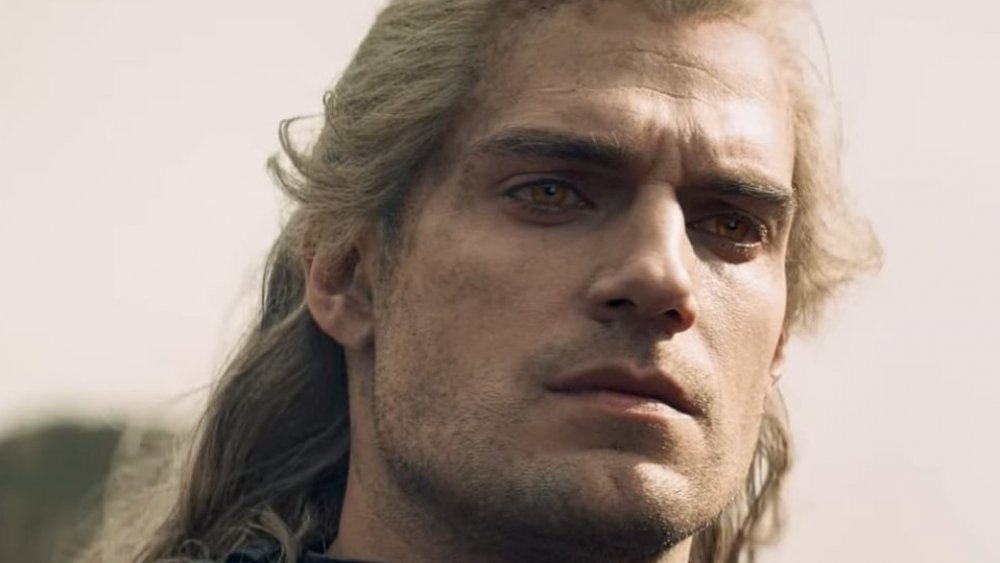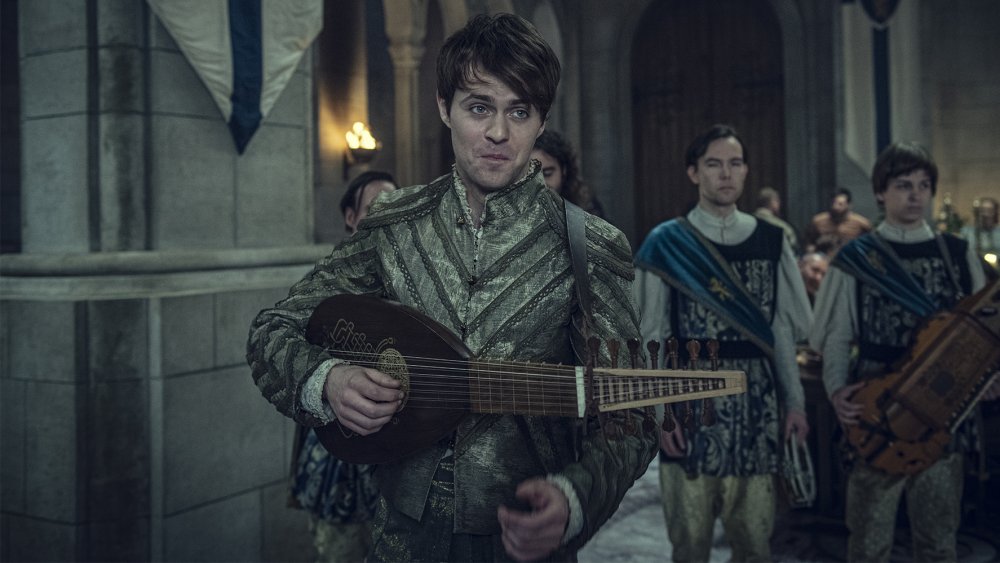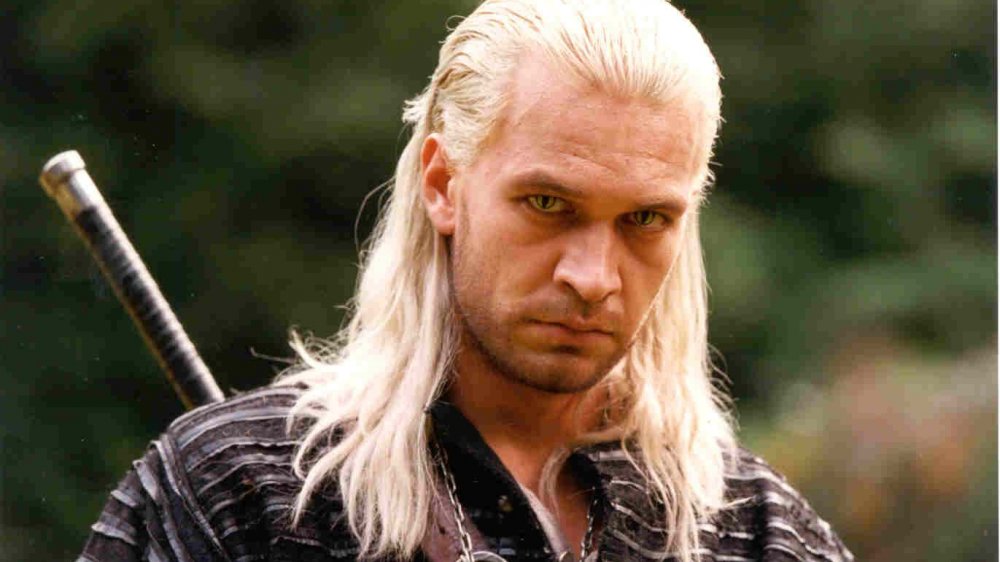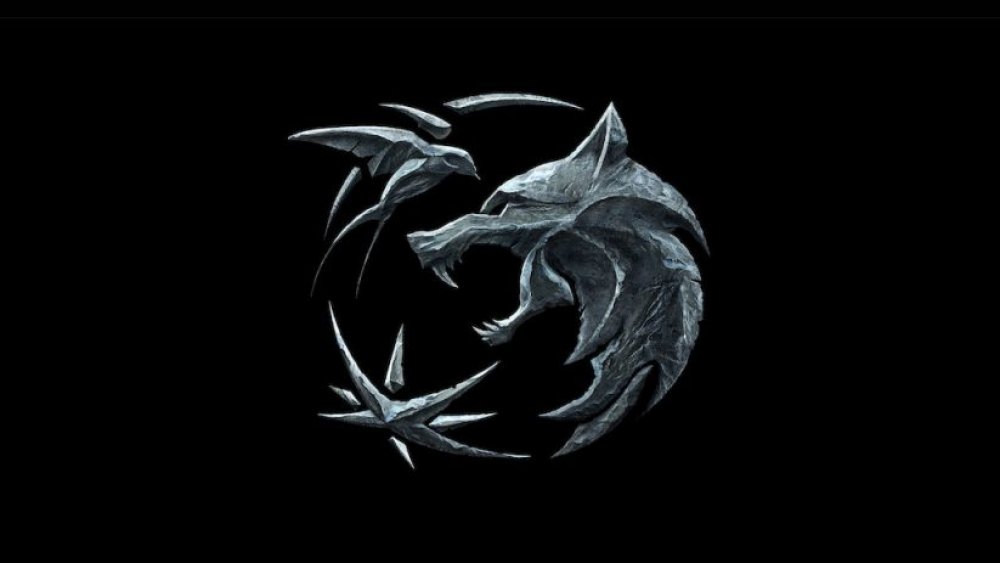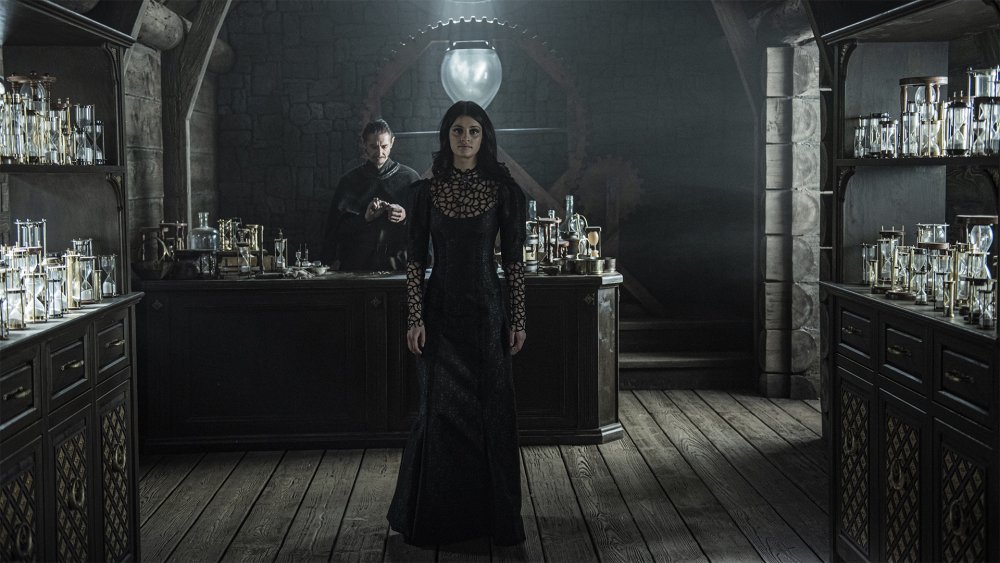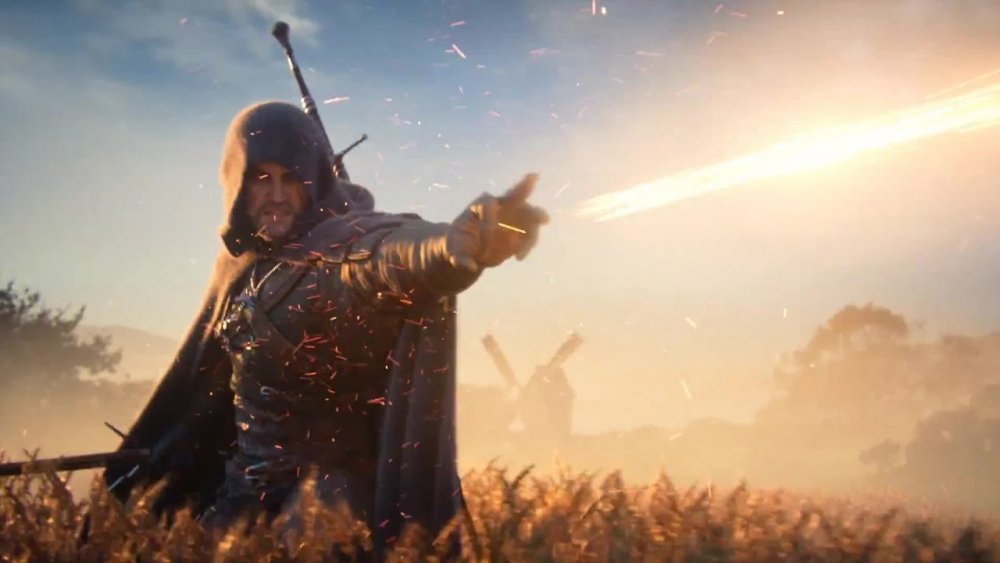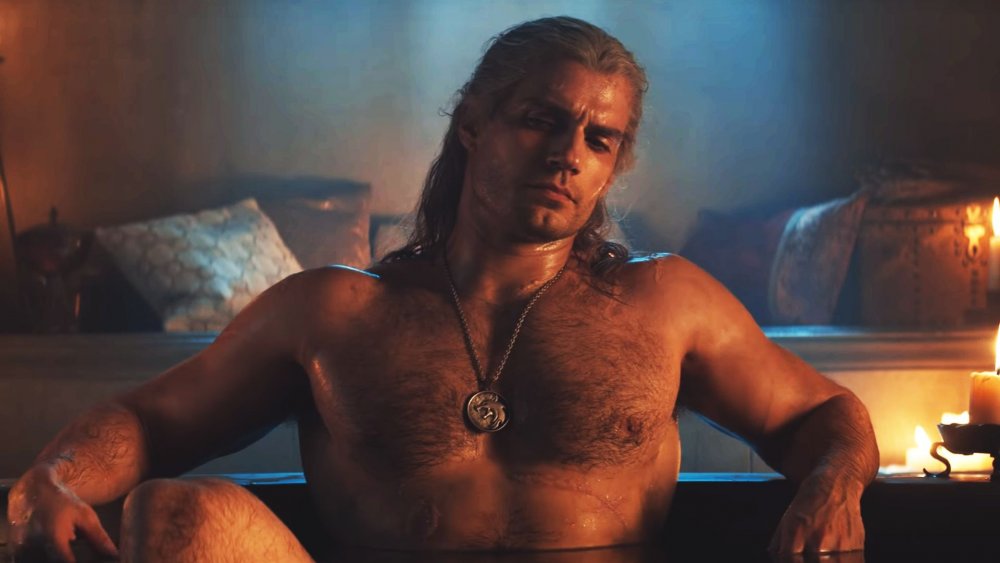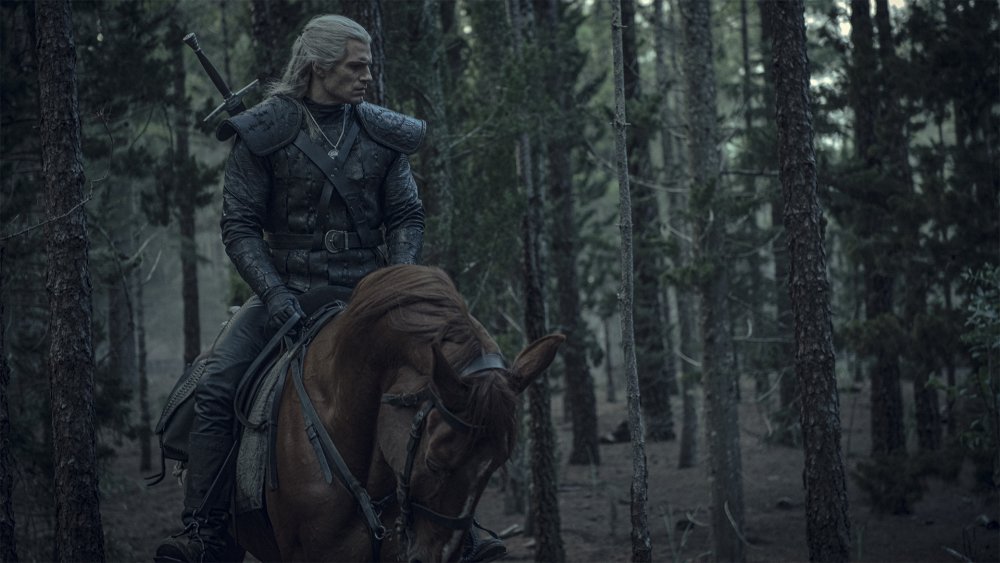Small Details You Missed In The Witcher
Even before its debut, Netflix's The Witcher had legions of fans, and with good reason. Not only has the titular Witcher, Geralt of Rivia, starred in some of the most popular video games of the past decade-and-a-half, but Andrezej Sapkowski's short stories and novels are beloved the world over. The show might be new, but people already know The Witcher very, very well.
They won't be disappointed. The first season of Netflix's long-awaited adaptation of Sapskowski's books remains remarkably faithful to the spirit of the novels, and it's packed with small details that only those well-versed in the ways of the Continent will notice.
There are nods to the short stories that spawned the series. There are appearances by important people from the franchise's past. There are, of course, a few video game Easter eggs. Unless you're a Witcher super-fan, you may not catch all of these details the first time around, but hey! You're going to need some reason to re-watch the series during the long wait for season 2.
A tune for every occasion
The Witcher doesn't have a traditional opening credits sequence, but it does have a theme song. "Geralt of Rivia," written by composers Sonya Belousova and Giona Ostinell, accompanies the title card early in each and every episode. It's a solid tune, and one that perfectly sets the stage for the action to follow. Listen carefully, however, and you'll realize that "Geralt of Rivia" is also different every time that you hear it, changing to better match the mood of the episode it introduces.
At the beginning of "Betrayer Moon," for example, a female vocalist carries the haunting melody, setting up Geralt's battle against the cursed princess who became the striga. In "Of Banquets, Burials, and Bastards," which delves deep into Ciri's origin story, "Geralt of Rivia" is slowed down and given an almost militaristic beat.
Occasionally, "Geralt of Rivia" doesn't show up at all. It's not forced into the show if it doesn't fit the pre-title scene, which is the right call. Still, the song is a nice touchstone when it appears, and it's fun to hear how it changes from episode to episode.
The other Geralt appears
The Witcher isn't the first live-action adaptation of Andrzej Sapkowski's novels. In 2002, actor Michal Zebrowski played Geralt in the Polish TV series The Hexer, which was also edited into a critically panned feature film. Like Netflix's The Witcher, The Hexer adapted stories from Sapkowski's first two Witcher books, The Last Wish and Sword of Destiny, while mixing in some original elements.
Zebrowski doesn't cameo in The Witcher, but that hasn't stopped him from playing Geralt again — sort of. While it's still Henry Cavill's handsome mug that they'll see on-screen, Polish fans should find Geralt's voice very familiar. Yes, that's right: Zebrowski is providing Geralt's dialogue in The Witcher's Polish-language dub, reprising the role he played almost 20 years ago.
It's not a detail that most English-speaking viewers will notice, but it's a nice treat for the Polish fans in the audience. The Witcher isn't the only Geralt-adjacent project Zebrowski has in the pipeline, either. The actor will also dub Keanu Reeves in the upcoming video game Cyberpunk 2077, which is made by CD Projekt Red, the company behind the Witcher video games.
The logos tell you everything you need to know
The symbols that appear at the beginning of every episode of The Witcher are full of spoilers — but you're only going to notice if you really know your stuff. Like the theme song, "Geralt of Rivia," the title card is different in every episode. The title is always the same, obviously, but the logo behind it changes, offering hints as to what's about to unfold — at least for people who've read the books.
For example, the first episode, "The End's Beginning," features the image of a solar eclipse. If you've read the Andrzej Sapkowski short story "Lesser Evil," you know that the princess Renfri was born under a so-called "black sun," leading a wizard to assume that she was cursed. Sure enough, "The End's Beginning" tells Renfri's story all the way to its brutal, bloody ending.
"Betrayer Moon" comes with a picture of claws and a Temerian lily, hinting at the cursed striga. The logo for "Of Banquets, Bastards and Burials" is a sword surrounded by a (family) tree, which is appropriate for an episode detailing how Ciri's parents met, as per "A Question of Price." If you want, you can see the full breakdowns on Reddit, although be warned: If you're familiar with the Witcher series, it'll spoil the show for you. If you're not, it'll all be gibberish.
How to speak Witcher like a pro
In The Witcher, characters don't just speak English. Magically-inclined characters also use elvish, or the Elder Speech, to cast spells, lift curses, and cause mayhem and mischief.
If you listen carefully, however, you might recognize some parts of the Elder Speech vocabulary. Sorry — that doesn't mean you're a magician. Author Andrezej Sapkowski based the Elder Speech on a mishmash of different languages, including Irish, Welsh, English, German, and Latin. Google Translate won't be much help in deciphering Elder Speech, but with a fan-made dictionary, a Rosetta Stone subscription, and enough spare time, you can probably get a handle on it.
But with so many different sources, how does The Witcher's take on Elder Speech sound so good? Easy: the language was designed by a pro. See, Sapkowski didn't actually create a fully-realized language — the books just contain bits and pieces of Elder Speech — so Netflix had to bring in David J. Peterson to fill in the blanks. Does that name sound familiar? It should. Peterson is the same guy HBO hired to create Dothraki and Valyrian for Game of Thrones. Peterson's work on that show was great, and from what we've seen so far, his efforts on The Witcher are just as good.
The games connection
Netflix has made it clear that The Witcher is based on the books, not the video games, but the show does have one major gaming connection. You just have to watch the end credits to find it.
For most viewers, the names Tomek Baginski and Platige Image — one of The Witcher's executive producers and the Polish production company that makes the show, respectively — won't mean much. Those who really love the games, however, know that Baginski, an Oscar-nominated animator, directed the stunning cinematics that brought all three of CD Projekt Red's Witcher titles to life.
In fact, without Platige and Baginski, The Witcher probably wouldn't have made it to the screen at all. Baginski, who's also on Platige's supervisory board, was the one who pitched The Witcher to Netflix. Originally, Baginski wanted to make a feature film based on two of Sapkowski's short stories. Netflix helped convince him to make a TV series instead, and brought showrunner Lauren Schmidt Hissrich on board. The rest is history.
Rub-a-dub-dub
The most famous image of Geralt of Rivia isn't the monster-slayer on horseback, riding into the wilderness to fight some nasty beast. It's not Geralt locked in a life-or-death battle with a ferocious creature. It is, of all things, the witcher soaking in a wooden bathtub, legs spread, leaving only a little to the imagination.
It's a moment from the opening scene of CD Projekt Red's critically acclaimed video game The Witcher 3: Wild Hunt, although by now it's become much bigger. In 2015, the website PC Gamer used a screengrab of Geralt in the tub as a header image in every story it published about The Witcher. Soon, the image became a meme on its own. Cosplayers started recreating the iconic moment in photographs. CD Projekt Red and Dark Horse created a statue commemorating the scene. It started as an April Fools joke, but you can now buy the real thing for $80.
While Netflix's show is based on the books, not the games, it pays tribute to the scene in episode five, "Bottled Appetites." Shortly after he meets Yennefer, the sorceress lures Geralt into the bath. You can guess what happens next. It's actually not the first time that we see Geralt bathe in the series — the witcher cleans up before the banquet in episode four, too — but look at that pose. Given star Henry Cavill's affection for CD Projekt Red's games, there's no way that's an accident.
All Cavill, all the time
The Witcher's sword fights are so impressive — seriously, the butchering of Blaviken must be seen to be believed — that it'd be easy to assume that talented stunt doubles handled all of the heavy lifting. Not true. The Witcher showrunner Lauren Schmidt Hissrich told Looper that star Henry Cavill did his own stunts on the show. Every single one of them.
"There is never a point where you see someone on screen as Geralt that's not him," Hissrich says. "It's always Henry." In fact, that proclamation extends beyond the fight scenes. Cavill didn't use stand-ins, even when most of his face and body is concealed. If you see Geralt's hand, his boot, or his elbow, it's Cavill on-screen.
In fact, Cavill was so dedicated to the role that he wore his costume, including his complete set of armor, while making breakfast or taking a nap. Most extras carried fake swords, but Cavill's wasn't just real. He helped design the weapon, customizing it as he saw fit. For all intents and purposes, Cavill is Geralt — and his performance is much, much better for it.
